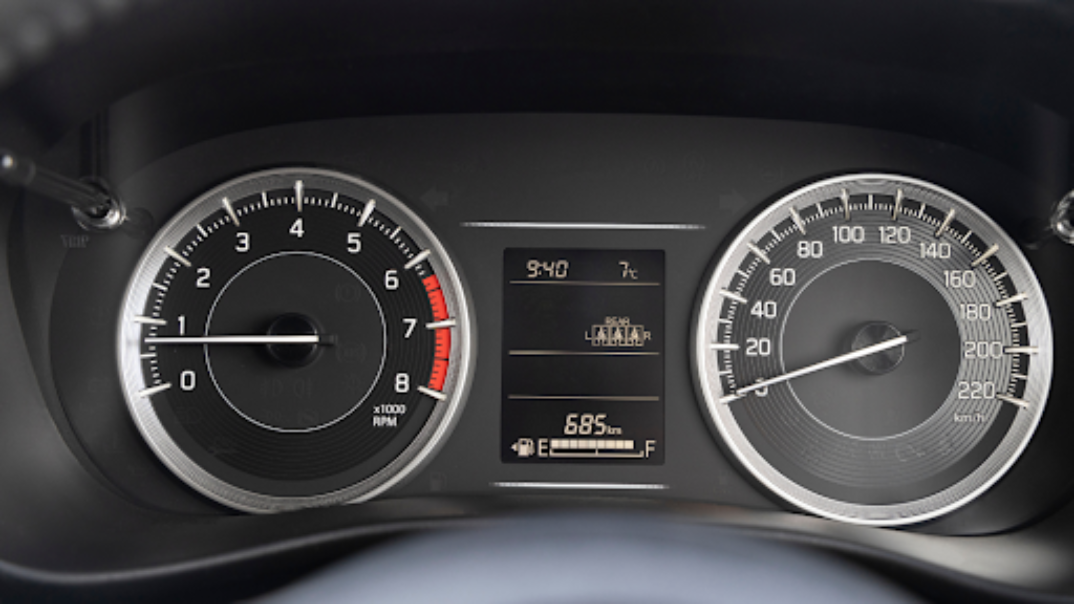This episode of How Things Work provides an insightful crash course on the basics of the cooling system in our vehicles.
If you can’t watch the video, you can read the video transcription below:
Edited for clarity and readability
Pieter: (00:01)
Welcome to this week's episode of How Things Work, and in today's segment, I'm going to be taking you through the cooling system on our vehicles. So summer is here, thank goodness, and temperatures are definitely rising, but it's during the summer months that we typically see a dramatic spike in cars suffering from overheating. So, what can we do to ensure that our cars don't overheat and how is the temperature of the engine actually regulated? And why does an engine get so hot in the first place? So, merely driving our cars at a moderate speed requires thousands of controlled explosions per minute, which results in the combustion chambers reaching staggering temperatures of up to two and half thousand degrees centigrade. So you can imagine cooling the areas around the combustion chamber becomes critical in order for the engine not to fail. So cooling systems that we find in our cars and bikes today have not really changed much in function from what we had over a hundred years ago, except that they are very, very reliable and very accurate.
Pieter: (01:12)
And we need them to be accurate because, not only do we require the cooling system to remove heat from the engine, but also to retain constant engine temperatures, regardless of the external temperatures and the loads that we apply to the engine. So too low, and the engine runs inefficiently, which produces more emissions, and too high, and we run the risk of engine damage. Now getting to the cooling systems themselves, we have two main types, liquid and air-cooled. And while air-cooled engines are mainly found on older cars, we still have some of them on current motorbikes. So looking at water-cooled engines, we have the following basic items. So firstly, we have passages inside the engine, block and heads, we have a water pump to circulate the coolant through those passage, and we have a thermostat to control the temperature of the coolant. We also have a radiator to cool the coolant, a radiator cap to control the pressure in the system and interconnecting hoses to transfer the coolant from the engine to the radiator...
Pieter: (02:20)
And also, the car's heater system where hot coolant is used to warm up the vehicle's interior. So it has two purposes. But in basic terms, a cooling system works by sending a liquid coolant through the passages in the engine block and the head or heads, if it's a V configuration. And now as the coolant flows through these passages, it picks up heat from the engine and the heated fluid then makes its way through rubber hoses to the radiator, which is usually in front of the car. And as it flows through the thin tubes in the radiator, the hot liquid is cooled by the airstream entering the engine compartment from the grille in front of the car. And once the fluid is cooled, it returns to the engine to absorb more heat. So it is actually called a heat exchanger. A very important component in all of this is the water pump, which has the job of keeping the fluid moving through the system of plumbing and hidden passages.
Pieter: (03:23)
Now, when I say liquid, we naturally think about water and although water is a major part of the cooling system, another critical liquid is of course antifreeze. And the combination of antifreeze and water is usually in a ratio of about one to one and is technically called a coolant. And the function of the antifreeze is threefold. Firstly, it needs to, as the name suggests, prevent the coolant from freezing, which is not really a challenge in South Africa. However, it is also there to increase the boiling point of the coolant and lastly, it also serves as a rust inhibitor. So if you ever have to top up your water bottle, make sure that you also replenish the antifreeze to maintain the ratio and keep the coolant effective against freezing and boiling. And by the way, it's also not a good idea to have purely antifreeze in the system as it'll cause a boil over effect.
Pieter: (04:22)
And I spoke earlier about how the cooling system maintains a specific engine temperature and the component that regulates this is called the thermostat. Now the thermostat is simply a valve that measures the temperature of the coolant, and if it's hot enough, it opens to allow the coolant to flow through the radiator. If the coolant is not hot enough, the flow to the radiator is blocked and the fluid is directed back to a bypass system that allows the coolant to return to the engine. Now, amazingly, the heart of the thermostat is a sealed copper cup that contains wax and a material or metal pellet. As the thermostat heats up, the hot wax expands, pushing a piston up against the spring pressure to open the valve and allow coolant to circulate, so pretty simple hey? But don't be tempted to remove the thermostat. I've come across a lot of people that do this for various reasons.
Pieter: (05:19)
Now, not only will the wild fluctuations and temperature cause fatigue between the block and the cylinder head and potential damage to the head gasket, but it can also cause the engine to overheat as the coolant is now flowing way too fast for the effective heat exchange to occur through the radiator and you can now overheat the engine. Now we typically regulate the engine temperature at around 90 degrees centigrade, which is sailing pretty close to the boiling point of water if the engine heats up, additionionally when it's under load. And in fact I've seen engine temperatures exceed a hundred degrees by some margin. So how come the fluid does not boil away? Well, firstly, the antifreeze component of the coolant increases the boiling point, but more interestingly is the cooling system is a sealed closed circuit, which means the pressure of the system increases. And a very clever physicist, Robert Boil, discovered that the higher the pressure in a closed system, the higher the boiling point and vice versa. So for example, at very low pressure, we can boil water at room temperature. Therefore the high pressure associated with our cooling system means we can have high cooling temperatures without it reaching a boiling point. So it's very important that you keep an eye out for any potential leaks in the cooling system, which will cause the pressure to revert back to atmospheric pressure and therefore allow the coolant to boil away at normal operating temperatures of the engine. The radiator hoses and heater hoses are easily inspected by just opening up the bonnet and looking in. You want to be sure that the hoses have no cracking or splitting and that there is no bulging or swelling at the hose ends. And if there's any sign of problems, the hoses should be replaced with original parts, never use a universal hose unless it's an emergency and a proper moulded hose is not available.
Pieter: (07:20)
You also need to have an eagle eye on your temperature gauge because by the time you notice the engine temperature increasing, the coolant has probably already boiled away and you have very, very little time to slow down and turn off the engine before you cause damage. Another component that can cause problems if it fails is the radiator cap. Now the radiator cap is designed to maintain pressure in the cooling system at certain maximum pressure. If the cooling system exceeds that pressure a valve in the cap opens to bleed the excessive pressure into the reserve tank. And once the engine is cooled off and negative pressure begins to develop in the cooling system. But when this happens, a second valve in the cap allows the coolant to be syphoned back into the radiator from the reserve tank. If the cap fails though, the engine can easily overheat, but a simple pressure test of the radiator cap is a quick way to tell if the cap is doing its job.
Pieter: (08:20)
Now, lastly, when the car's moving, there is a flow of air through the radiator, but if you've stopped at a robot, for example, this flow obviously stops as well and we therefore, have radiator fans, which switch on to maintain some degree of air flow through the radiator. Now these fans work very hard as they also provide a constant airflow for the air conditioning system. So if you do notice that your engine temperature increases when you stop, a quick test is to switch on the air conditioner. And if the fans switch on, then it's likely just a temperature sensor that's failed. But if the fans don't switch on when you turn on the air conditioner, it's probably a bit more serious and could mean you have to replace the fan motors themselves.
So there you have it, a crash course in the basics of the cooling system. I hope you enjoyed some of the insights into how the system works and we look forward to seeing you on future episodes of How Things Work.
To watch thefull episode, visit:https: //content.suzukiauto.co.za/how-things-work



.png)